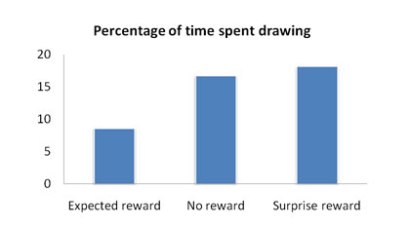Your child is being bullied at school. He or she has mustered the courage to tell you about it-no small feat, considering how humiliating it can be for kids to tell their parents about maltreatment by their peers-and together, you have tried everything you can think of to manage the problem on your own. Your child has practiced ignoring the bully, avoiding his tormentors, standing up to mean kids in assertive ways, trying to enlist his teacher’s support, and using humor to deflect the bully’s taunting. He has shut down his Facebook page and stopped texting entirely, hoping that taking himself out of the technology loop might give him some respite from the cruelty. Yet, the bullying persists…and is getting worse.
You make a decision to call your child’s teacher and report what has been going on-the name calling, the cruel texts, the exclusion at lunch, the snickering in the halls, the shoves on the bus, and the threats of physical harm (yesterday’s warning: “I am going to f’ing end you if you come to school tomorrow.”) Reaching out and asking for help was hard for you; as a parent, you desperately hoped to be able to protect your child on your own. Confident, however, that you have taken all of the right steps to manage the problem independently and knowing that the bullying (and your child’s desperation) are only getting worse, you reluctantly place a call to school. A part of you is relieved that your burden can now be shared and professionals can help with the job of keeping your child safe at school.
Your relief is short-lived.
Despite the “Bully-Free Zone” posters that line the school cafeteria walls and the Zero-Tolerance policy that was boasted about during last September’s Back-to-School night, your experience is that the school would rather not address the problem at all. The responses you get from your child’s teacher include bland lip service such as:
• I didn’t see it happening and I can’t just take your child’s word that it did.
• Kids will be kids, you know.
• This stuff just happens. It’ll all blow over soon.
• Your child just needs to have a thicker skin.
• The child you are accusing of bullying is an honor student and Vice President of the Student Council. I just can’t believe he would do such a thing. Are you sure your child isn’t exaggerating?
More and more, as I talk with parents whose children have experienced bullying, they share this common experience of having their concerns downplayed by the very adults who are charged with keeping schoolchildren safe.
Now, before I go any further, I want to state my unequivocal support for most educators and school personnel. I have had the distinct honor and pleasure of working with hundreds of them in a professional capacity, and dozens of them through my own children’s schooling, and I recognize their role as monumental. It is my belief that most adults who dedicate their professional lives to Education are heroes and I thank them endlessly for their service.
With that said, there are also adults who fail children and I don’t know any more eloquent or sophisticated way to describe my feelings about it other than to tell you that it burns me. While I understand that kids are often mean to each other-and sometimes unspeakably cruel-what I cannot wrap my mind around is when adults knowingly allow it to happen. Parents ask me: what should I do when I report bullying to school and the school downplays my concerns? This is the conversation we usually have:
First, we usually talk a bit about why some school personnel downplay reports of bullying from concerned parents.
Lack of Awareness
One recent study reports that in school settings, bullying is missed by adults 96% of the time. “How can this be?” many parents ask. Easier than it seems, I am afraid. While most teachers are very focused on what goes on in their classrooms, the majority of bullying occurs in locations like the lunchroom, the locker room, the playground, the bathroom, the hallways, the bus, and perhaps most infamously, online. When classroom teachers tell concerned parents that they are not aware of bullying incidents taking place in their classroom, they are usually quite accurate. (Why more cafeteria aides and bus drivers aren’t trained and made responsible for recognizing and responding to bullying is a whole different article…)
The flip side of adult awareness is that the thrice-failed-third-grade neighborhood meanie named Spike who jumps out in the schoolyard and demands little kids’ lunch money is a bully of yesteryear. Today’s bullies-particularly those that use relational aggression to hurt and humiliate-are often brilliant social diagnosticians who know how to manipulate their teachers just as effectively as they know how to torture their peers. Yes, the straight-A Student Council President may well be the bully that “rules the school” safely below the radar of his unsuspecting teachers.
The Teacher’s Plate Runneth Over
While I am of the conviction that school personnel are responsible for keeping kids safe, I am equally convinced that teachers today have so much on their plates that safeguarding kids’ emotional well-being is a real challenge for them. Nonetheless, be clear; I believe that educators and parents share a collective responsibility to create a culture in which bullying is unacceptable and to protect kids from physical and psychological harm. When schoolchildren are bullied relentlessly and without adult intervention, they have difficulty succeeding academically. For this reason alone (notwithstanding their moral obligation), bullying is a problem educators are duty-bound to address.
Feelings of Helplessness
Bullying among school-aged children is widely regarded as an epidemic problem in the United States. If there were an easy solution to the problem, it would have been suggested and implemented long ago. You wouldn’t be thinking about it and I wouldn’t be writing about it. Getting a handle on bullying in schools is a complex challenge that leaves many Educators feeling overwhelmed and helpless. More often than they would care to admit, the teacher who downplays an incident of bullying is the teacher who simply has no idea how to handle the problem in his classroom.
“Kids Will Be Kids” Mentality
Up to this point in my discussions with parents, I am always somewhat sympathetic to Educators and the obstacles they face in managing bullying effectively. When it comes to the “kids will be kids” mentality, however, my empathy comes to a screeching halt. Minimizing a problem is not what caring adults do; it is what manipulative bullies do.
Yes, kids can be mean. No, adults should never dismiss bullying as a “rite of passage” or tolerable fact of childhood. When they do, they violate a child’s trust and abdicate their role as responsible adults. Period.
What Parents Can Do When Bullying is Downplayed
After talking about the various reasons why some adults downplay reports of bullying, I like to work with parents to strategize realistic approaches for pursuing the attention and focus of school personnel. The point I make most strongly is that it takes a tremendous amount of courage for most kids to talk with their parents about being the target of bullying. It is such a deeply painful and humiliating experience that even kids with the most trusting relationship with their parents find their victimization hard to reveal. Therefore, when kids do talk about being bullied, it is imperative that parents honor the courageous act of sharing and become their child’s champion.
I’m not exaggerating when I tell parents to don their hero’s cape and get ready to be superhuman, because in many cases, that is what challenging the status quo will take. In every case, that is what their child deserves. So, what can parents do when their report of bullying is downplayed by school personnel?
Talk. Talk. Talk.
A bully’s preferred method of intimidation is to keep his victim isolated. A parent’s best strategy for countering bullying is to reach out to as many people as necessary to make sure that the bullying comes to an end. If you have reached out to your child’s teacher and received a bland, disinterested, or downplayed response, do not be deterred. Continue to contact other school personnel-preferably according to a chain of command-to make sure that your voice (and more importantly, your child’s voice) is heard.
Rather than allowing your emotion to demand an on-the-spot demand meeting with a school official, use your level head to call ahead for an appointment with the teacher, guidance counselor, school social worker, Principal-or all of the above! If your needs continue to be unmet, contact the PTO, the school board, the superintendant, or even the local police if you are concerned about your child’s safety.
Talk to your neighbors about what is going on. Reach out to other parents. Don’t bash the school or the bully in a gossipy way that tarnishes your own integrity, but do make sure to enlist the help of everyone and anyone that is in a position to address the situation and help bring the bullying to a stop.
Another idea: take your concerns online. The blogging community can be a rich source of support, guidance, and been-there-done-that practical advice for parents whose kids are being bullied. Likewise, the media has taken a growing interest in recent months about the problem of bullying. If you can’t convince school personnel to take a stand, perhaps the media can. Jacqui DiMarco, co-author of When Your Child is Being Bullied: Real Solutions for Parents, Educators, and Other Professionals, advises parents to “be the most pleasant nuisance you possibly can be until you have resolution.”
Document, Document, Document
Write down your child’s account of the incident(s) of bullying. Record as much detail as possible, since memory tends to be short and details can get easily and understandably distorted by emotion. When you contact the staff at your child’s school, make notes on who you talk to and when. Document the school personnel’s responses-word for word, whenever possible. Prior to meeting with a teacher, counselor, or Principal, write down your goals for the conversation. Afterwards, put in writing any agreed upon resolutions. Request that all involved parties sign the document to indicate their agreement.
Documenting conversations, decisions, and agreed upon plans of action help keep parents and school personnel on the same page during what can be an emotional time. Establishing a “paper trail” is not a “gotcha!” process, but rather an effective way of keeping all involved parties organized, informed, and goal-directed.
Keep At It
In her bestselling book, Odd Girl Out: The Hidden Culture of Aggression in Girls, Rachel Simmons writes that when a child doesn’t think his situation will improve, the strength that his parents show can be hugely reassuring. Indeed, a show of resolve and dogged determination to persist until their concerns are adequately addressed is among the most important things parents can do for their children. This willingness to keep at it communicates to kids that their concerns are valid, their safety is paramount, and that they are worthy of your time and effort.
Keep in mind: By the time your child has told you about the bullying he has faced, he has in all likelihood been dealing with the problem for quite some time and is feeling beaten down (psychologically as well as possibly physically) and demoralized. When a parent shows that he believes what his child has reported, takes the concerns seriously, and is willing to persistently stand up for his child, the child’s self-worth can begin to grow again.
Public Service Announcements and Posters that tell victims to “Speak Up” in the face of bullying mean nothing at all if, when kids and families find the courage to speak up, they are met with disbelief, denial, and downplaying by school staff. What kind of message are adults sending? What better way is there to violate a child’s trust and create a sense of hopelessness and helplessness? Adults cannot continue to fail children in this way.
No family should find themselves all alone when navigating the dangerous and destructive waters of bullying in school. We need all adults-parents, teachers, administrators, law enforcement, media, and anyone else with a heart-to work together as champions for children. Fasten on that cape Moms and Dads; your child needs you to be his superhero.
Source: Psychology Today









